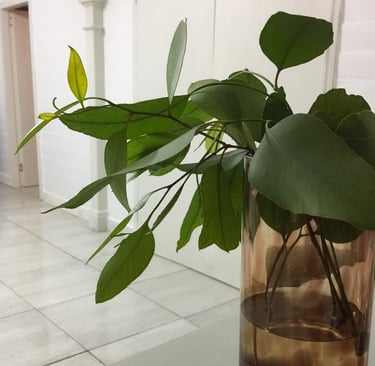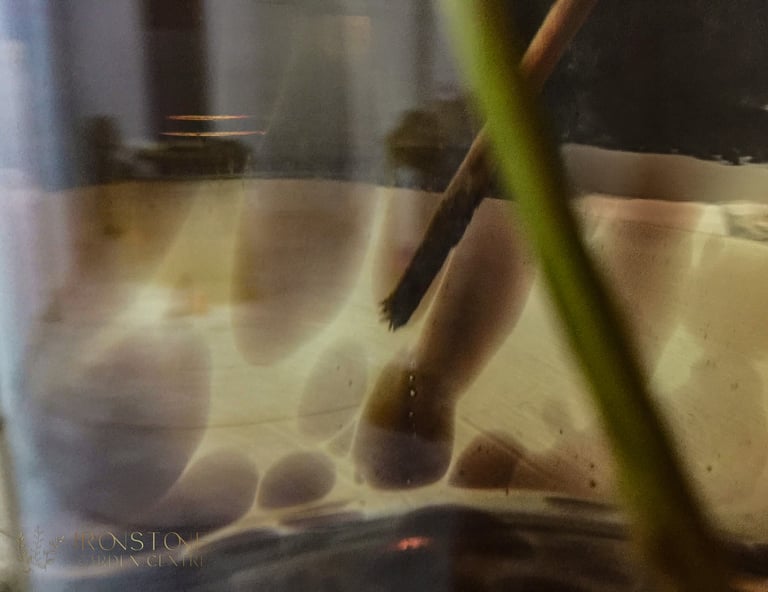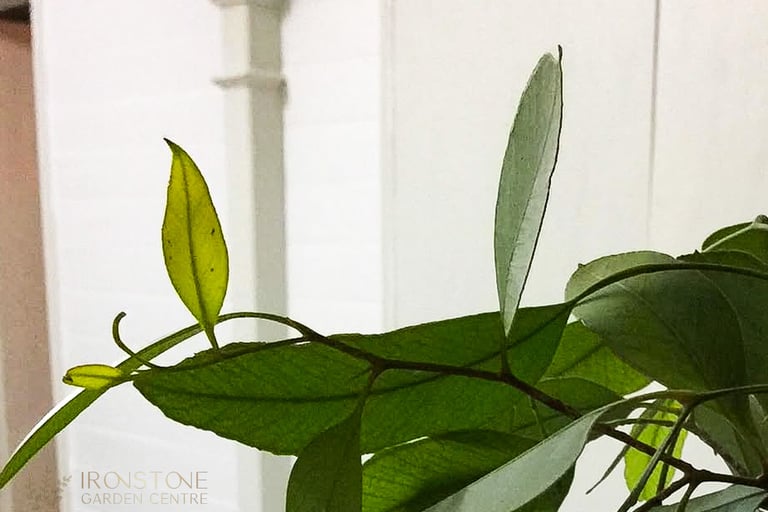Life in a Vase


As we prepare for our move, we’ve been reflecting on the incredible trees we’ve planted at Ironstone Garden Centre over the past 18 months. These trees have transformed our space and given us the chance to wonder. One such opportunity presented itself when we placed a simple vase of eucalyptus branches indoors just two days ago.
The vibrant eucalyptus leaves stand out against the smooth glass vase and water below. The shape of their growth gives the display a dynamic, almost sculptural quality, but beneath the surface, there’s something extraordinary happening.
The eucalyptus branches in the vase are demonstrating their natural adaptability and life-sustaining processes. Even though these branches have been cut, they are still very much alive and responding to their new environment. Here’s a closer look at what’s going on:
Water Uptake and Cellular Rehydration


When the branches were placed in water, the cut ends began to absorb moisture through their vascular tissue, specifically the xylem. This uptake of water rehydrates cells along the length of the branch, enabling processes like leaf sprouting and even potential root formation. If you look closely at the submerged cut ends, you might notice small, fuzzy lines appearing. These lines are likely early signs of root primordia, where specialised cells are beginning to divide and prepare for the possibility of root development.
Activation of Dormant Buds
Eucalyptus branches, like many woody plants, contain dormant buds along their stems. These buds remain inactive under normal conditions but can be triggered by favourable changes in their environment. In this case, the availability of water and a stable indoor environment has signaled these buds to activate, resulting in the fresh, pale green leaves now visible. These leaves are particularly tender and vibrant, a stark contrast to the tougher, more mature leaves typically found on a tree.
Phototropism: Reaching for the Light


If you observe the arrangement closely, you’ll notice that the new leaves are all oriented upwards. This is due to phototropism—a plant’s natural response to light. Even in a vase, the branches are actively “reading” their environment and directing new growth toward the light source, an incredible reminder of the innate intelligence of plants.
Beyond the biology, this simple arrangement of eucalyptus branches reminds us of the natural beauty that can be found in even the smallest moments. The leaves bring a sense of freshness and renewal, while the dynamic growth and movement lends an air of vitality and motion. The contrast between the vibrant foliage and the calm, clear water below creates a striking visual balance that draws the eye and soothes the mind.
Did you know?
Eucalyptus trees are known for their ability to recover from extreme conditions, including drought and fire. The sprouting of new leaves from cut branches mirrors their natural ability to regrow from buds after damage in the wild.
While the fuzzy lines forming on the submerged ends of the branches might eventually develop into roots, eucalyptus is notoriously tricky to propagate from cuttings. Its essential oils, while protective against decay, can also inhibit rooting in some species.
Even as a simple arrangement, eucalyptus leaves release their signature refreshing fragrance, filling the room with a natural, calming scent.
This vase of eucalyptus branches is more than just a beautiful display; it’s a reminder of how plants constantly adapt and respond to their surroundings. Next time you trim your eucalyptus tree or come across its branches, consider giving them a second life in a vase.
